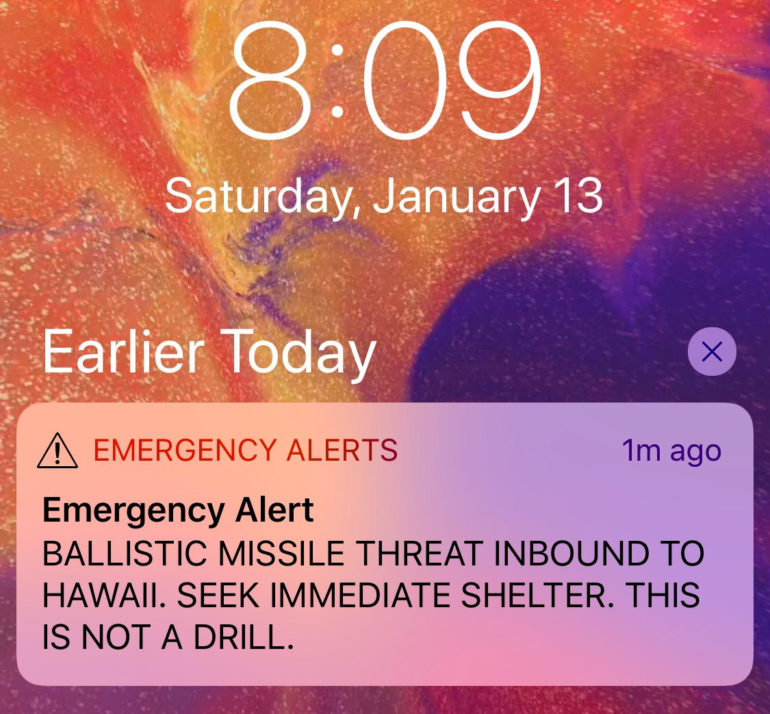
A screen capture from a Twitter account showing a missile warning for Hawaii, U.S., January 13, 2018 in this picture obtained from social media. Courtesy of TWITTER @wpugh/via REUTERS THIS IMAGE HAS BEEN SUPPLIED BY A THIRD PARTY. MANDATORY CREDIT. NO RESALES. NO ARCHIVES
By: Julie Arounlasy
Hawaii was sent into 38 minutes of panic on Jan. 13 when an alert for a ballistic missile threat was sent throughout the state.
Three days later, the Japanese national broadcaster distributed a similar alert to people in the country. Both warnings turned out to be false.
Nuclear missile threats to North America from North Korea have caused a rise in political distrust and tension. Although the alerts have turned out to be untrue, the threats still remain.
Public Safety Canada spokesperson Andrew Gowing told Humber News that preparation is key in any emergency.
“Canadians should keep in mind that every emergency situation is unique. The best approach for responding to any situation is to have an emergency kit prepared beforehand, and listen to the radio or TV or follow social media for information from local officials and follow their instructions.”
The Department of National Defence (DND) said in the event of a missile attack North American Aerospace Defense Command (NORAD), who safeguards the sovereign airspace of the United States and Canada, would inform the DND of the detected missile. DND would then notify appropriate officials, including Public Safety Canada.
All levels of government have collaborated to develop the Chemical, Biological, Radiological, Nuclear and Explosives Resilience Strategy for Canada, which helps build room across governments to respond to these risks.
In Canada, the National Public Alerting System (NPAS), is a multi-channel “all-hazards” initiative that provides emergency management organizations throughout Canada with a standard alerting capability to warn people of fast approaching hazards (most commonly natural disasters and amber alerts).
Cellphone notifications, such as the mobile warnings received in Hawaii, are soon to come.
The Canadian Radio-television and Telecommunications Commission (CRTC) recently decided to include wireless service providers to implement a mobile device alert system by April.
The CRTC website states that alerts on mobile devices will warn Canadians about dangers to life and property as soon as possible so that they can take appropriate action.
They expect the new initiative will be active in about a year.
Gowing said in addition, emergency alerts are typically issued by the provincial or territorial emergency management agencies which are responsible for the “on-the-ground” response.
A nuclear emergency could be declared if there is an accident or an intentional release (or threat of intentional release) of potentially harmful radioactive materials. In either situation, exposure to radiation can cause health risks.
Public safety authorities advise that during a nuclear emergency, people may be told to minimize the amount of outside air entering their home. People should immediately close doors and windows, then turn off air exchangers and heat-recovery units. They should also find their emergency kit, turn off appliances and stay indoors until advised otherwise.
Those who survive the attack should remove their clothes as soon as possible and seal them in a plastic bag, rinse their hair and body in the shower and then put on clean clothes from a closed drawer or closet.
People in most areas could be allowed to come out within a few days or move to unaffected areas. Those in areas with the highest radiation levels might need to stay inside for up to a month.
Despite recent missile threats from North Korea, Public Safety Canada said the likelihood of a nuclear incident is very low.

